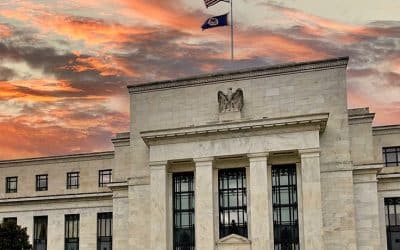Record returns and the rise of AI drive a very positive start to the season

Redacción Mapfre
RoadMAP: Monthly Update of Markets and Investment Strategy
What happened?
Although September has historically been a negative month for returns, this year the month could not have been more positive. In fact, it is the best September in 15 years in terms of profitability for the main U.S. index. Favorable expectations regarding inflation and growth, as well as a more lax monetary policy, drove the revaluations of different assets as equities and fixed income rose in unison.
The Federal Reserve cut interest rates by 25 bps in what was its first reduction in nearly a year, leaving rates at 4–4.25% in a meeting that promised to be eventful due to uncertainty over how widely supported the cut would be. However, only Stephen Miran opted for a cut of 50 bps, while other Committee members like Bowman and Waller (favored candidates to replace J. Powell by D. Trump) voted in favor of cutting only 25 bps.
The economic projections outlined an improvement in growth and unemployment but at the cost of raising the inflation forecast. Regarding where each voting member of the Committee saw interest rates, the Fed now expects two more rate cuts for the remainder of the year and only one for the entire year of 2026.
What was clear from J. Powell's press conference is that the biggest concern is the labor market, given that in his words, it is in a "curious balance" as the pace of hiring and layoffs has decreased.
That’s why the recent U.S. government shutdown draws even more attention, since in addition to the layoffs of non-essential personnel and the suspension of some salary payments, the release of key macroeconomic data will be canceled—as already happened with the September employment report. The duration of the closure will be key to determining its economic impact as well as for the upcoming interest rate decision by the Fed at the end of October.
In Europe, the most notable development was the continued improvement in peripheral macroeconomic figures compared to core countries, as reflected in the various credit ratings that upgraded Italy and Spain while downgrading France. September was a very active month for primary market issuances, which were nonetheless well received by investors.
In fact, despite the high volume of public debt, credit spreads continued to narrow and are now below their historical averages for both Investment Grade and High Yield segments. But when discussing what happened in September, we can’t overlook the major news in the field of Artificial Intelligence. Massive capital investment announcements have continued, and last month it was made public that Nvidia will invest $100 billion in OpenAI so that the company can build five data centers equipped with Nvidia’s own chips.
In other words, Nvidia will finance its suppliers to purchase its products—a circular dynamic reminiscent of the previous tech bubble (something beginning to worry some investors), especially since many of these commitments even exceed the companies’ available cash flows, adding to the uncertainty regarding the potential returns on these investments.
Meanwhile, sectors most closely linked to AI continue to lead the gains, namely technology and communications, which, given their weight in the indices, helped push the S&P 500 to reach multiple all-time highs during the month.
What's our take?
Our perspectives on growth, inflation, monetary policy, and business profits have changed little. The market continues to be driven mainly by the United States, where key sectors such as technology, semiconductors, and services with pricing power have sustained growth of margins and robust profits.
This improvement in productivity, supported by strong investments in artificial intelligence and automation, reinforces our view that valuations in quality companies can be sustained, even in a financial context that, while not expansive, is less restrictive than in the later phases of the cycle.
Regarding monetary policy and financial conditions, we believe that the trend points towards a normalization that allows for sustaining valuations in quality companies and profitable growth. We do not anticipate a credit tightening scenario, although we acknowledge that shifts in interest rate expectations may create short-term noise and trigger rotations between investment styles.
Furthermore, we maintain a prudent attitude regarding the reliability of some macroeconomic data: the lower consistency in certain statistics and the frequent reviews lead us to complement the analysis with alternative indicators and, above all, with microeconomic information from the companies themselves. We confirm a constructive view on equities that reflects our confidence that companies will continue to generate profits in a stable financial environment, which allows us to maintain significant exposure to equities without losing the ability to adjust the strategy if volatility increases.
As for the geographical allocation, we maintain an overweight position in the United States relative to Europe. The preference for the United States is due to a greater visibility of benefits and a sustained leadership in innovation and productivity, with a special role of artificial intelligence. In Europe, we maintain a selective approach focused on quality, balancing the position between defensive sectors and areas with greater growth potential while prioritizing businesses with global exposure.
In Fixed Income, we continue to see greater risk in the longer tranches due to the pressure of countries to finance their deficits and the large investments necessary in infrastructure and defense in the case of Europe. Furthermore, during the month of September, Dutch pension funds have begun to adjust their portfolios to the new regulation, which implies lower demand for the longer tranches, thus putting more pressure on the curves.
While credit spreads appear very tight, we do not foresee increases in the coming months. The IRR extracted from corporate bonds is attractive, but we focus only on bonds with an A credit rating or higher since the extra return from going down the rating scale is not worth it.
Looking ahead to the coming months, our central scenario is one of moderate growth with gradual disinflation, while the main risks would stem from confidence shocks, tensions in debt markets, or a coordinated deterioration in earnings as third-quarter results begin to be released.
What are we doing?
We have not made significant changes to the portfolios recently; the most notable has been the reduction of the duration of some portfolios given the unfavorable outlook we see in the longer tranches and a large number of expected interest rate cuts in a less favorable environment.
We continue to favor a steeper yield curve, given that longer maturities are likely to remain under pressure while shorter ones are well anchored by central banks. We also prefer to position portfolios toward peripheral bonds versus core country debt such as France.
We remain participants in the market’s appreciation while keeping some room to take advantage of corrections within a tactical range—a range that we could even increase in equities, depending on clear signals in valuations, earnings revisions, or market breadth.
Regarding valuations, we recognize that some growth segments in the U.S. are trading at high levels. Therefore, we prefer to focus the exposure on profitable growth and quality at a reasonable price, avoiding companies dependent on external capital or with negative cash flows. In Europe, the risk lies in falling for apparent bargains that mask structural problems: we avoid fragile balance sheets, unproductive investments, and low cash conversion.
In short, we prefer to avoid extremes: neither complacency with multiples unsupported by earnings, nor a value hunt fraught with hidden risks.



